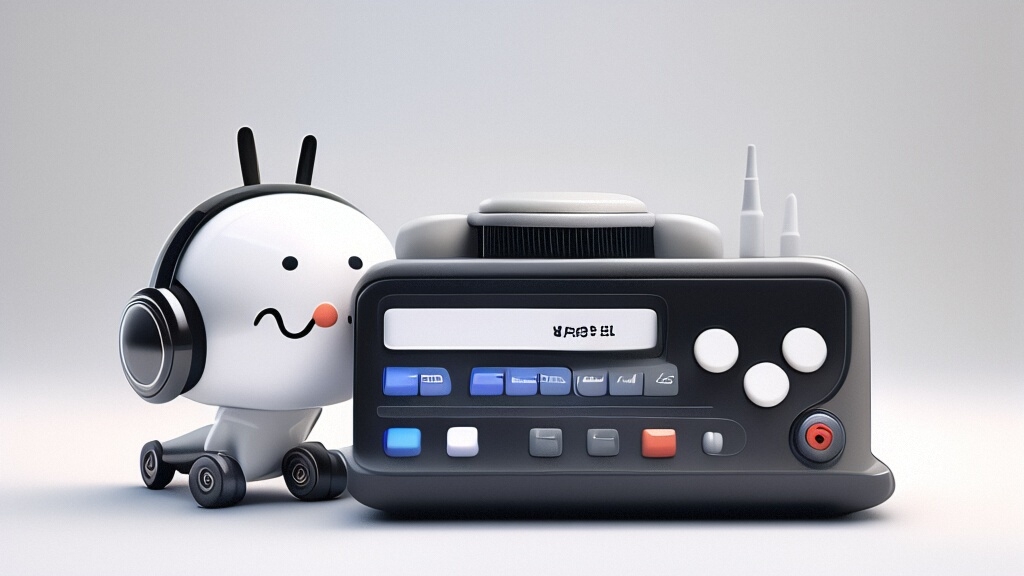🔥关注墨瑾轩,带你探索编程的奥秘!🚀
🔥超萌技术攻略,轻松晋级编程高手🚀
🔥技术宝库已备好,就等你来挖掘🚀
🔥订阅墨瑾轩,智趣学习不孤单🚀
🔥即刻启航,编程之旅更有趣🚀


** 10步实现T型速度曲线动画——从“菜鸟”到“大神”的完整攻略**
第一步:环境搭建——“魔法的准备材料”
问题:没有开发环境?就像没魔法杖的巫师!
解决方案:
- 安装Visual Studio(选“Windows Forms App (.NET Framework)”)。
- 新建项目,命名为
TSpeedCurveAnimation。
代码示例:项目结构
// 1️⃣ 步骤1:在Form1.cs中添加全局变量
public partial class Form1 : Form
{
private const int CanvasWidth = 800; // 画布宽度
private const int CanvasHeight = 600; // 画布高度
private List<PointF> pathPoints = new List<PointF>(); // 路径点集合
private Timer animationTimer = new Timer(); // 动画定时器
private float currentPosition = 0f; // 当前位置
private float currentVelocity = 0f; // 当前速度
private float currentAcceleration = 0f; // 当前加速度
private float totalTime = 5000f; // 总动画时间(毫秒)
private float maxSpeed = 100f; // 最大速度
private float maxAcceleration = 10f; // 最大加速度
}
第二步:绘制静态路径——“画出赛道”
问题:机器人没赛道?就像赛车没公路!
解决方案:用鼠标点击生成路径点,用贝塞尔曲线连接成平滑路径。
代码示例:鼠标交互与路径绘制
// 2️⃣ 步骤2:鼠标点击添加路径点
private void Form1_MouseClick(object sender, MouseEventArgs e)
{
if (e.Button == MouseButtons.Left)
{
pathPoints.Add(e.Location); // 添加新点
Invalidate(); // 触发重绘
}
}
// 3️⃣ 步骤3:OnPaint绘制路径
protected override void OnPaint(PaintEventArgs e)
{
base.OnPaint(e);
Graphics g = e.Graphics;
// 绘制路径点
foreach (var point in pathPoints)
{
g.FillEllipse(Brushes.Red, point.X - 3, point.Y - 3, 6, 6);
}
// 至少需要4个点才能生成贝塞尔曲线
if (pathPoints.Count >= 4)
{
using (Pen pen = new Pen(Color.Black, 2))
{
// 生成贝塞尔曲线
PointF[] points = new PointF[4];
Array.Copy(pathPoints.ToArray(), points, 4);
g.DrawBezier(pen, points[0], points[1], points[2], points[3]);
}
}
}
第三步:T型速度算法——“狂飙模式的引擎”
问题:速度曲线像“坐过山车”?T型算法让你“稳如老狗”!
解决方案:
- 分阶段计算:匀加速 → 匀速 → 匀减速。
- 公式推导:
- 加速时间:
t1 = maxSpeed / maxAcceleration - 减速时间:
t3 = maxSpeed / maxAcceleration - 匀速时间:
t2 = (totalTime - t1 - t3) / 1000(单位秒转毫秒)
- 加速时间:
代码示例:T型速度计算
// 4️⃣ 步骤4:计算T型速度曲线
private void CalculateTProfile(float currentTime)
{
float t1 = maxSpeed / maxAcceleration; // 加速时间(毫秒)
float t3 = maxSpeed / maxAcceleration; // 减速时间(毫秒)
float t2 = (totalTime - t1 - t3) / 1000; // 匀速时间(秒)
if (currentTime <= t1)
{
currentAcceleration = maxAcceleration;
currentVelocity = maxAcceleration * currentTime;
}
else if (currentTime <= t1 + t2 * 1000)
{
currentAcceleration = 0;
currentVelocity = maxSpeed;
}
else
{
currentAcceleration = -maxAcceleration;
currentVelocity = maxSpeed - maxAcceleration * (currentTime - t1 - t2 * 1000);
}
}
第四步:动画定时器——“让时间飞起来”
问题:动画静止不动?定时器就是“时间魔法”!
解决方案:
- 定时器触发:每毫秒更新一次位置。
- 位置计算:
currentPosition += currentVelocity * deltaTime。
代码示例:定时器控制动画
// 5️⃣ 步骤5:初始化动画参数
private void InitializeAnimation()
{
currentPosition = 0f;
currentVelocity = 0f;
currentAcceleration = 0f;
animationTimer.Interval = 1; // 每毫秒触发
animationTimer.Tick += AnimationTimer_Tick;
}
// 6️⃣ 步骤6:定时器Tick事件
private void AnimationTimer_Tick(object sender, EventArgs e)
{
float deltaTime = (float)animationTimer.Interval / 1000; // 时间差(秒)
float currentTime = animationTimer.Interval * animationTimer.TickCount; // 当前时间
CalculateTProfile(currentTime); // 计算当前速度/加速度
currentPosition += currentVelocity * deltaTime; // 更新位置
if (currentPosition >= CanvasWidth) // 到达终点停止
{
animationTimer.Stop();
}
else
{
Invalidate(); // 触发重绘
}
}
第五步:绘制运动物体——“让小球狂飙”
问题:看不到运动物体?给小球“画个脸”!
解决方案:
- 绘制小球:用
Ellipse表示物体位置。 - 跟随路径:根据
currentPosition计算坐标。
代码示例:绘制运动轨迹
// 7️⃣ 步骤7:在OnPaint中绘制小球
protected override void OnPaint(PaintEventArgs e)
{
base.OnPaint(e);
Graphics g = e.Graphics;
// 绘制路径点和路径(略,参考步骤3)
// 绘制小球
float ballRadius = 10f;
float ballX = currentPosition; // X坐标随currentPosition变化
float ballY = CanvasHeight / 2; // Y坐标固定在中间
g.FillEllipse(Brushes.Blue, ballX - ballRadius, ballY - ballRadius,
ballRadius * 2, ballRadius * 2);
// 绘制速度/加速度文本
g.DrawString($"Velocity: {currentVelocity:F2}",
Font, Brushes.Red, new PointF(10, 10));
g.DrawString($"Acceleration: {currentAcceleration:F2}",
Font, Brushes.Red, new PointF(10, 30));
}
第六步:启动与停止——“控制狂飙的开关”
问题:动画无法控制?按钮就是“启动/停止键”!
解决方案:
- 按钮事件:点击“Start”启动动画,点击“Stop”暂停。
代码示例:按钮控制
// 8️⃣ 步骤8:在设计器中添加两个按钮(Start/Stop)
private void StartButton_Click(object sender, EventArgs e)
{
InitializeAnimation();
animationTimer.Start();
}
private void StopButton_Click(object sender, EventArgs e)
{
animationTimer.Stop();
}
第七步:性能优化——“让动画更流畅”
问题:动画卡成PPT?双缓冲是“流畅剂”!
解决方案:
- 启用双缓冲:避免闪烁。
- 减少重绘:只在必要时重绘(如定时器触发时)。
代码示例:双缓冲设置
// 9️⃣ 步骤9:在Form1构造函数中启用双缓冲
public Form1()
{
InitializeComponent();
this.DoubleBuffered = true; // 🔥 关键!开启双缓冲
}
第八步:测试与调试——“狂飙测试时间”
问题:小球不移动?检查参数是否“配置正确”!
解决方案:
- 添加路径点:至少4个点生成贝塞尔曲线。
- 调整参数:
totalTime:总动画时间(毫秒)。maxSpeed:最大速度(单位可自定义)。
代码示例:调试技巧
// 10️⃣ 步骤10:在Form1_Load中初始化参数
private void Form1_Load(object sender, EventArgs e)
{
// 设置默认参数
maxSpeed = 100f; // 每秒移动100像素
maxAcceleration = 10f; // 加速度10像素/秒²
totalTime = 5000f; // 5秒完成动画
}
完整代码整合:一个能跑的T型动画Demo
using System.Drawing;
using System.Windows.Forms;
public partial class Form1 : Form
{
private const int CanvasWidth = 800;
private const int CanvasHeight = 600;
private List<PointF> pathPoints = new List<PointF>();
private Timer animationTimer = new Timer();
private float currentPosition = 0f;
private float currentVelocity = 0f;
private float currentAcceleration = 0f;
private float totalTime = 5000f;
private float maxSpeed = 100f;
private float maxAcceleration = 10f;
public Form1()
{
InitializeComponent();
this.DoubleBuffered = true;
this.Size = new Size(CanvasWidth, CanvasHeight);
}
private void Form1_MouseClick(object sender, MouseEventArgs e)
{
if (e.Button == MouseButtons.Left)
{
pathPoints.Add(e.Location);
Invalidate();
}
}
protected override void OnPaint(PaintEventArgs e)
{
base.OnPaint(e);
Graphics g = e.Graphics;
// 绘制路径点
foreach (var point in pathPoints)
{
g.FillEllipse(Brushes.Red, point.X - 3, point.Y - 3, 6, 6);
}
// 绘制贝塞尔曲线
if (pathPoints.Count >= 4)
{
PointF[] points = new PointF[4];
Array.Copy(pathPoints.ToArray(), points, 4);
g.DrawBezier(new Pen(Color.Black, 2), points);
}
// 绘制小球
float ballRadius = 10f;
g.FillEllipse(Brushes.Blue,
currentPosition - ballRadius, CanvasHeight / 2 - ballRadius,
ballRadius * 2, ballRadius * 2);
// 显示速度/加速度
g.DrawString($"Velocity: {currentVelocity:F2}",
Font, Brushes.Red, new PointF(10, 10));
}
private void InitializeAnimation()
{
currentPosition = 0f;
currentVelocity = 0f;
currentAcceleration = 0f;
animationTimer.Interval = 1;
animationTimer.Tick += AnimationTimer_Tick;
}
private void AnimationTimer_Tick(object sender, EventArgs e)
{
float deltaTime = (float)animationTimer.Interval / 1000;
float currentTime = animationTimer.TickCount;
// 计算T型速度曲线
float t1 = maxSpeed / maxAcceleration;
float t3 = maxSpeed / maxAcceleration;
float t2 = (totalTime - t1 - t3) / 1000;
if (currentTime <= t1)
{
currentAcceleration = maxAcceleration;
currentVelocity = maxAcceleration * currentTime;
}
else if (currentTime <= t1 + t2 * 1000)
{
currentAcceleration = 0;
currentVelocity = maxSpeed;
}
else
{
currentAcceleration = -maxAcceleration;
currentVelocity = maxSpeed - maxAcceleration * (currentTime - t1 - t2 * 1000);
}
currentPosition += currentVelocity * deltaTime;
if (currentPosition >= CanvasWidth)
{
animationTimer.Stop();
}
else
{
Invalidate();
}
}
private void StartButton_Click(object sender, EventArgs e)
{
InitializeAnimation();
animationTimer.Start();
}
private void StopButton_Click(object sender, EventArgs e)
{
animationTimer.Stop();
}
}
常见问题急救箱
Q:小球直接飞出屏幕?
A:检查totalTime是否过短,或maxSpeed是否过高。
Q:贝塞尔曲线不平滑?
A:确保路径点数量≥4,并均匀分布。
Q:速度显示为0?
A:可能maxAcceleration为0,或totalTime未设置。
Q:动画卡顿?
A:开启双缓冲(this.DoubleBuffered = true)或降低Timer.Interval。
** T型速度曲线的“狂飙口诀”**
通过以上10步,你的C#动画已经从“菜鸟”变身“狂飙大师”!记住:
- 环境搭建是“魔法的基石”:Visual Studio + 双缓冲,流畅不卡顿。
- 路径绘制是“赛道的蓝图”:鼠标点击生成贝塞尔曲线,让小球有路可走。
- T型算法是“引擎的核心”:分阶段加速/减速,稳如老狗不飘。
- 定时器是“时间的魔法”:毫秒级更新,让动画“活”起来。
- 性能优化是“流畅的秘诀”:双缓冲+减少重绘,告别卡顿。


























 被折叠的 条评论
为什么被折叠?
被折叠的 条评论
为什么被折叠?










